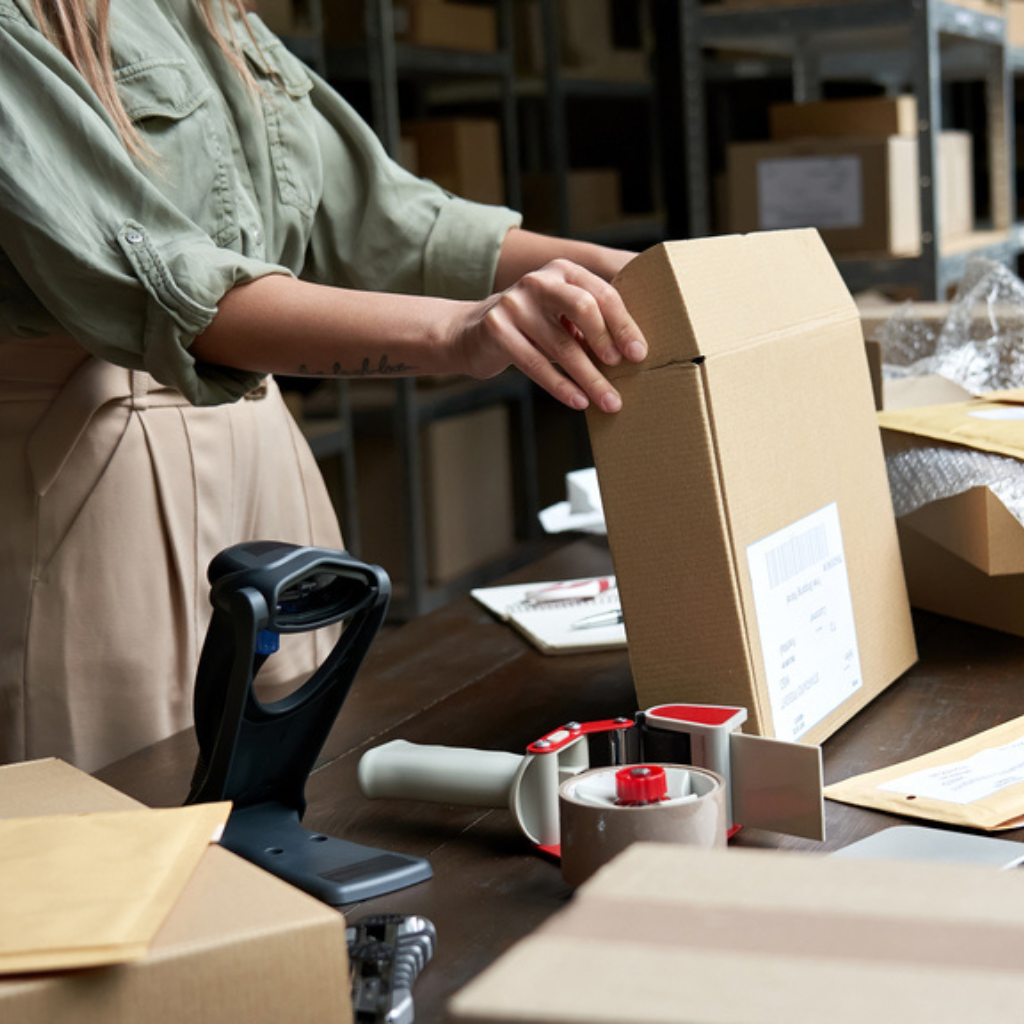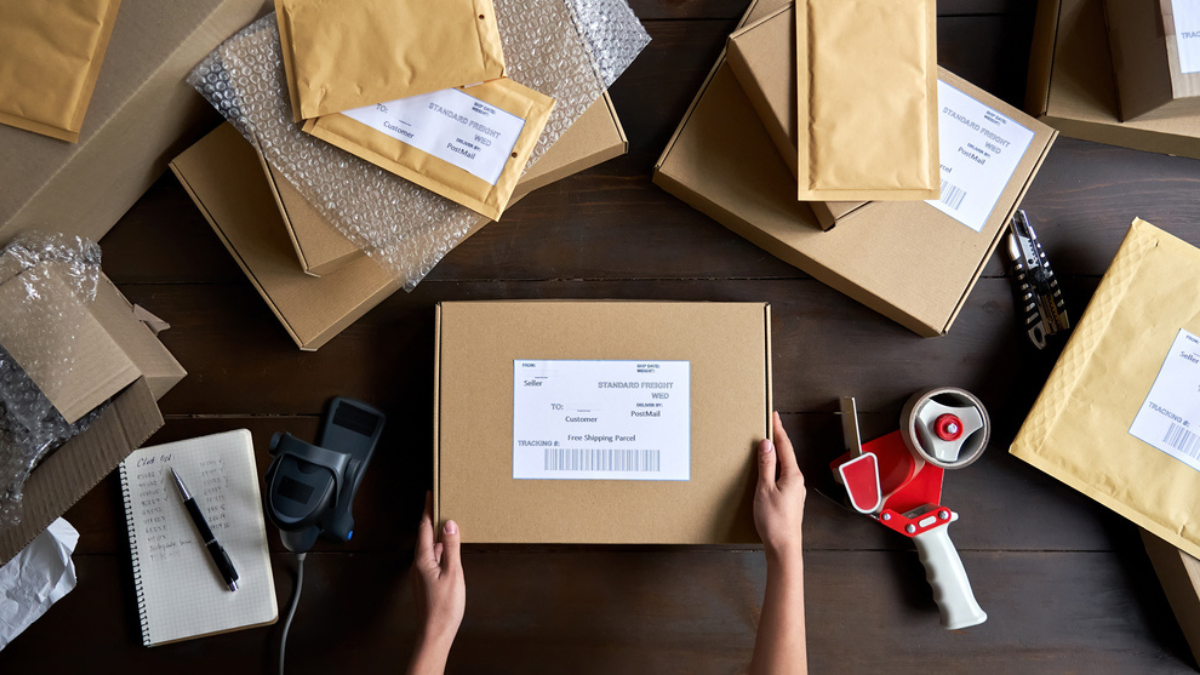Direct to consumer fulfillment, or D2C order fulfillment, has revolutionized retail and ecommerce forever.
As more and more consumers shift to online and social as their preferred shopping channels, there’s never been a better time to make the switch over to launching their own direct-to-consumer fulfillment channels.
But what is direct-to-consumer fulfillment, and why are so many stores turning to its approach?
Let’s get started.
What is direct-to-consumer fulfillment?
Direct-to-consumer (d2c) fulfillment is an ecommerce model where merchants and vendors sell and ship directly to their customers through digital channels and fulfillment centers instead of intermediaries such as retailers, wholesalers and distributors.
In the wake of COVID-19, it’s plain to see why this model had seen such massive growth. With stay-at-home and quarantine orders enacted by many cities across the globe, the only recourse that shoppers had to get the goods they wanted was through digital channels.
While retail foot traffic is slowly rebounding, the gradual decline of retail foot traffic combined with barren urban centres created a shift to working from home has led many brands to launch their products digitally instead of paying high retail rent prices.
Additionally, consumer shopping patterns and trends that emerged during the early stages of the pandemic have cemented themselves into collective memory.
The convenience of shopping online paired with quick and timely deliveries and low shipping costs have turned many away from malls and retail centers, with 55% of consumers preferring to buy from direct-to-consumer brands instead of other means.
The availability of same-day delivery services and advancements in ecommerce fulfillment have made the switch even easier for D2C brands of all sectors and industries.

Benefits and negatives of direct-to-consumer fulfillment
Switching to a direct-to-consumer model comes with its own set of benefits and negatives.
In addition to providing order fulfillment in-house, organizations seeking direct-to-consumer fulfillment services will also have to contend with inventory management, supply chain management and warehouse operations.
Here are a few more things to consider for a D2C order fulfillment process.
Pros
Lower barriers to entry
Sales platforms and ecommerce website builders such as WooCommerce have made it easier than ever for businesses and entrepreneurs to enter the digital marketplace.
By eliminating overhead costs such as rent, wages and other administrative costs associated with a physical retail store, consumer D2C brands enjoy much lower barriers to entry.
Higher profit margins
Brands operating through a direct-to-consumer model enjoy exponentially higher profit margins.
Third-party intermediaries such as retailers and wholesalers can charge businesses a percentage of each sale made through their platform or a fee for each SKU that they place for sale on their site.
The newer, more streamlined D2C ecommerce fulfillment process reduces costs by selling products through a business’s own supply chain.
While costs for leasing a fulfillment center, partnering with a third-party logistics provider and managing inventory can add up, they’re going to be far lower than the cut that traditional retail third-parties take.
Direct control over the customer experience
Engaging directly with your customers through your own digital platforms and channels instead of allowing third parties to do it for you can revolutionize your brand’s entire reputation.
Ensuring a consistent brand identity, brand voice, and messaging system is difficult when your goods and services are spread so widely over multiple platforms.
Centralizing all of your processes into one offers direct control over how your business interacts with online customers and gives you better visibility over how your products are being delivered and helps you build brand loyalty.

Cons
More difficult management
When you’re operating alone, you’re also managing alone. While this makes sense from a consistency standpoint, it also creates complexity in your operations as you have no fulfillment partner.
Having team members like an operations manager or payment processing team to help you maintain the day-to-day operations of your business.
For smaller entrepreneurial ventures and teams, this isn’t as large of an issue. Shipping orders, maintaining quality control and maintaining stock levels for an SME or small business are easier to manage when order volumes are low.
However, the tune changes when a larger organization makes the switch, which leads us to the next con.
Difficult to scale
Launching a direct-to-consumer brand is easy but ensuring continued growth is hard. As the business scales up, new processes and operations have to be implemented to accommodate the increased sales volume.
While it once made sense to process, package and ship out orders from an apartment or dwelling, growing direct-to-consumer brands now need to rent warehouse space, invest in inventory control systems and effectively manage their fulfillment strategy to keep delivery cost-effective.
These issues are further compounded with sudden, unexpected demand spikes that can place strain on your supply chain and create a stockout event.
Increased market competition
Before direct-to-consumer fulfillment was ubiquitous, physical distance restricted the competition to other businesses within travelling distance of one another.
If a particular store was in an undesirable location with low foot traffic, they essentially posed no threat.
However, today’s digital-first has flipped this power balance on its head. Now, whether you have multiple locations or one, customers are still likelier to make an online purchase than they are to visit a retail site in person.
Online, customers have access to nearly limitless shopping options. If one business does not offer quick shipping or same-day delivery, they’re likely to bounce and turn to a competitor instead.
Today, more than 55% of millennials turn to Amazon fulfillment instead of other shopping avenues due to the time savings, lower shipping costs and convenience that the ecommerce platform offers.
When you’re selling directly to your customers, you’re not just competing with businesses near your physical proximity; you’re competing with the world.

How to make the switch to a direct-to-consumer model successfully
Offering consumer order fulfillment is no easy task, especially if you’re just getting established in the ecommerce space.
With that being said, there are a few tips and tricks you can consider to make the switch successfully.
Offer same day delivery
Whether it’s through collaborating with a fulfillment company or hiring the services of a fulfillment center, offering your customers the convenience of same-day delivery should be the first priority on your list.
Today’s digital shoppers don’t just want affordable same-day delivery; they expect it. 43% of online shoppers will abandon their carts if the delivery costs are too high, and another 25% will abandon their carts if same-day delivery isn’t available.
If your store doesn’t offer same-day delivery, your customers will shop online at a place that does. Consumers are more than willing to click away to another website to get what they want affordably and quickly with literally limitless options at their fingertips.
Write compelling product descriptions
Product descriptions are the digital equivalent of a retail display shelf – it provides customers with information about your products and helps you sell them.
Unlike traditional retail, which allows customers to see, touch and interact with their products, digital shoppers have no such opportunities.
In the absence of interacting and engaging with actual products, product descriptions provide customers with information on your product’s features, its unique selling points and hints towards your larger brand strategy.
Depending on your customer base, the important aspects you’ll choose to include or omit will differ.
A direct-to-consumer fulfillment model affords you more visibility and engagement with your customer base, so use this to your advantage to find out what your target audience is looking for in terms of engagement.
Partner With a fulfillment provider
Outsourcing fulfillment operations to 3PL providers and fulfillment services is a wise choice for businesses.
It helps them from handling logistics, such as inventory, orders, and shipping. These partners are experts in this field, allowing businesses to focus on their core functions.
Outsourcing also improves the customer experience through faster order processing and efficient support.
Customers and businesses can both gain from using a fulfillment provider.

